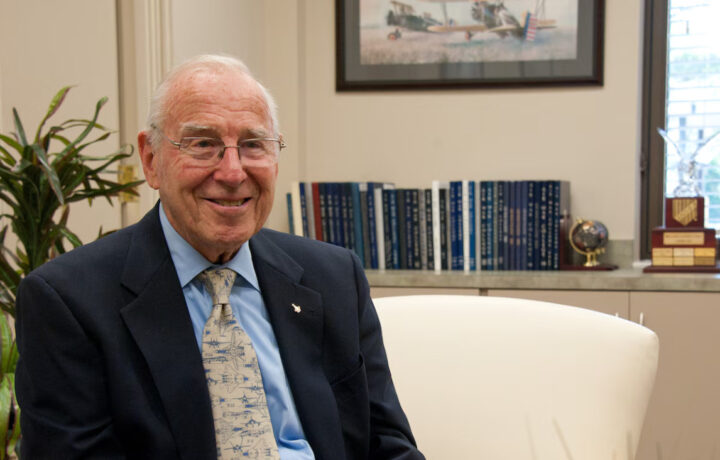On August 7, 2025, the world lost James A. Lovell Jr.—an American icon best known for commanding Apollo 13. But while Lovell’s calm voice during a crisis captivated a generation, his legacy extends far beyond that single moment. His life, shaped by rejection, discipline, innovation, and adaptability, reads like a leadership manual for anyone operating in complex, high-pressure careers, including those of us in the security clearance community.
Lovell’s journey is not just a story about survival. It’s a story about preparation, resilience, and making strategic decisions when the stakes couldn’t be higher. For national security professionals, program managers, defense analysts, and anyone managing sensitive operations, his life offers powerful and practical lessons.
Lesson One: Turn Setbacks Into Preparation
Before Lovell became an astronaut, he faced repeated rejection. He was turned down by the U.S. Naval Academy and later by NASA’s first astronaut selection. But he didn’t see those as closed doors. Instead, he doubled down, logging flight hours and deepening his technical expertise. Eventually, he was selected for NASA’s second astronaut class—proof that setbacks can be stepping stones if you’re willing to keep preparing.
For those navigating government roles or positions requiring clearance, this mindset is critical. Whether it’s a delayed promotion, a failed proposal, or an unsuccessful application, it’s not the end. Rather, it’s an opportunity to sharpen your edge. In this field, technical credibility and demonstrated resilience go further than momentary wins.
Lesson Two: Preparation Outweighs Bravado
Lovell often said he wasn’t a risk-taker but rather a planner. As a Navy test pilot and later a safety engineer, he learned that success comes from reducing variables and mastering systems. That’s not glamorous, but it’s how you build confidence that holds when pressure hits.
In the security field, this translates to a core truth: real leadership is often built behind the scenes. It’s built in briefing books, redundant systems, and risk scenarios gamed out in advance. Whether you’re assessing a cyber vulnerability or preparing for a site inspection, your reputation is not shaped by how loudly you speak in the room but by how well you’ve prepared.
Lesson Three: Expect Friction, Then Learn From It
Lovell’s Gemini VII mission broke records for flight duration, but the mission was far from smooth. Uncomfortable suits, food issues, and equipment frustrations challenged the crew, but their feedback directly led to design changes in the Apollo program.
That willingness to document failures and suggest improvements is a trait that high-performing teams rely on. Instead of being discouraged by friction, Lovell’s team leaned into it and translated the discomfort into better tools for future missions. For modern leaders, this is a reminder that iteration and after-action feedback are how elite teams evolve.
Lesson Four: Move Fast, Think Big, Stay Grounded
Apollo 8 was a bold mission. NASA leaders made a high-risk decision to orbit the Moon on short notice, and Lovell’s team had just four months to prepare. What followed was one of the most iconic missions in human spaceflight history.
The ‘Why can’t we?’ mindset is exactly what high-performing professionals in defense and intelligence should embrace when tackling new threats or untested ideas. It’s not about rushing recklessly. It’s about moving with urgency and clarity, backed by thorough risk analysis and technical confidence.
And when Lovell made a critical navigation error during the mission? He owned it, fixed it, and kept moving. That’s the kind of leader people trust—someone who can admit a mistake and recover with focus.
Lesson Five: Pivot Like It’s the Mission
Apollo 13 wasn’t about a Moon landing. It was about staying alive. After an oxygen tank explosion, Lovell’s leadership held the crew together as they worked with mission control to reframe the goal from exploration to survival. That calm, fact-based leadership under duress saved lives.
In high-clearance environments where real-world stakes mirror this kind of complexity, Lovell’s response is a masterclass. Stay calm. Don’t let ego cloud judgment. Reframe the mission and work the problem with what you have.
This applies whether you’re leading a cybersecurity incident response, navigating a contract cut, or dealing with a security breach. Great leaders know when to abandon the original plan and shift priorities without losing the team.
Lesson Six: Don’t Coast on Reputation—Keep Learning
Lovell didn’t treat his NASA career as a lifetime pass. Before leaving the military, he enrolled in Harvard Business School’s Advanced Management Program and prepared for a new chapter. He went on to lead companies in telecommunications and serve on boards, thus proving that the fundamentals of leadership translate across industries.
For cleared professionals, this is a call to invest in ongoing development. Technologies change, threat environments shift, and new leadership challenges emerge. The best time to prepare for your next role is before you need it.
Lesson Seven: Match Passion to Purpose
Lovell once said, “If you aren’t motivated in the business you’re in, you’re in the wrong business.” That’s not just a soundbite—it’s a philosophy. When you align your values with your mission, you don’t just complete tasks, you lead movements.
Whether your mission is securing networks, protecting critical infrastructure, or analyzing intelligence, Lovell’s legacy serves as a north star. Build your credibility. Plan for friction. Lead with calm. And stay ready for the next challenge because, as Lovell showed us, your greatest test may also be your defining moment.




